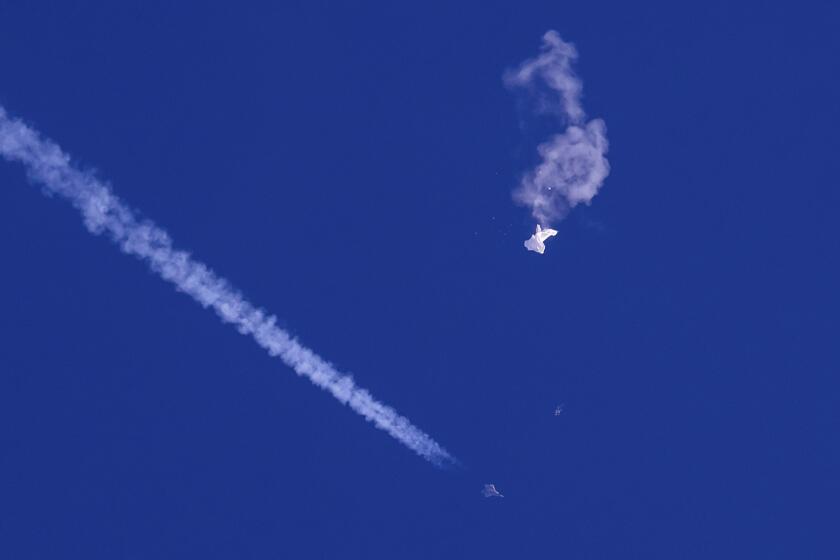Schumer says 2 downed objects believed to be balloons

- Share via
WASHINGTON — The United States believes the unidentified objects shot down by American fighter jets over Canada and Alaska were balloons, though smaller than the China balloon downed over the Atlantic Ocean last weekend, Senate Majority Leader Charles E. Schumer said Sunday.
Schumer (D-N.Y.) told ABC’s “This Week” that he was briefed on Saturday night by President Biden’s national security advisor, Jake Sullivan, after the incident hours earlier over the Yukon. On Friday, an object roughly the size of a small car was downed over remote Alaska, according to the White House.
Asked whether those two recent objects were balloons, Schumer said, “They believe they were, yes, but much smaller than the first one.”
The balloon incident has become a serious obstacle to one of President Biden’s top foreign policy goals: stabilizing the prickly U.S. relationship with Beijing.
The government has said the first balloon was about the size of three school buses. It was shot down Feb. 4 off the South Carolina coast after it had traversed the United States. The Biden administration said it was used for surveillance. China claims it was on a meteorological research mission.
Schumer said teams were recovering debris from the objects and would work to determine where they came from. The ones downed on Friday and Saturday were smaller and flying at a lower altitudes of about 40,000 feet, within the airspace occupied by commercial flights, compared with about 60,000 feet for the first one.
“The bottom line is until a few months ago we didn’t know about these balloons,” Schumer said. “It is wild that we didn’t know. ... Now they are learning a lot more. And the military and the intelligence are focused like a laser on first gathering and accumulating the information, then coming up with a comprehensive analysis.”
More to Read
Sign up for Essential California
The most important California stories and recommendations in your inbox every morning.
You may occasionally receive promotional content from the Los Angeles Times.











